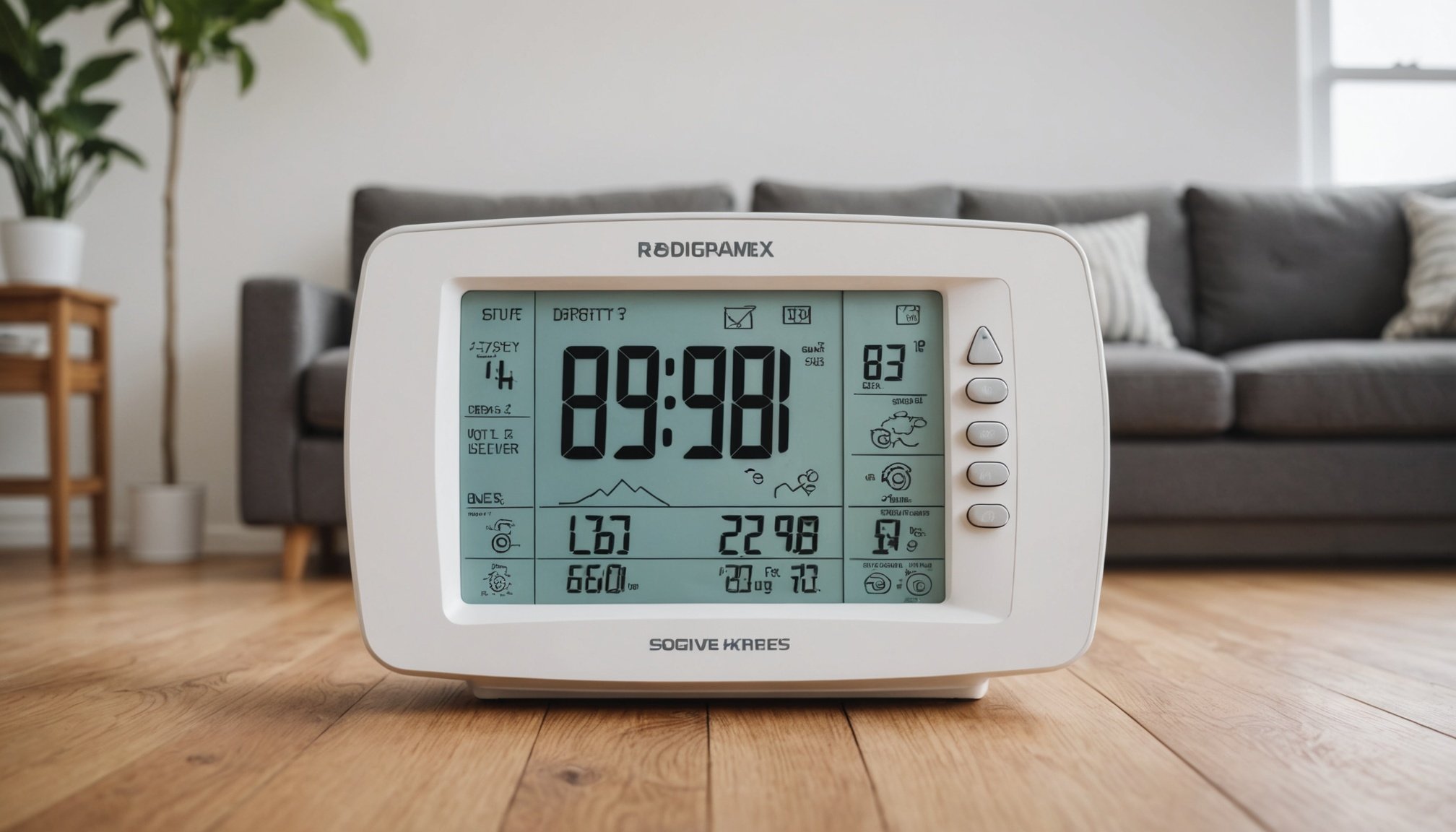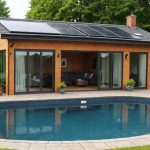Humidity is a critical factor that determines the comfort and healthiness of your living space. It refers to the concentration of water vapour present in the air, and it can significantly impact both your well-being and the condition of your home. Humidity levels that are too high or too low can cause numerous issues, from respiratory problems to property damage. Understanding what constitutes the best humidity levels in your house and how to maintain them can significantly improve your indoor living conditions.
Understanding Humidity and Its Impact on Your Home
Before delving into the ideal humidity levels for your home, it’s vital to understand what humidity is and how it impacts both your health and your property. Humidity is the presence of water vapour in the air. When this moisture level is too low or too high, it can create an array of problems.
A découvrir également : Elevate your meals: top hot boxes for fresh and trendy lunches
High Humidity in Your Home
High humidity levels can make your house feel stuffy and uncomfortable. Excess moisture can also lead to the growth of mould and mildew, which can cause structural damage to your home and potentially trigger allergic reactions. Dampness in the air can also attract pests, such as cockroaches and dust mites, which thrive in moist conditions.
Low Humidity in Your Home
On the other end of the spectrum, low humidity levels can lead to dry skin, throat and eyes. It can also aggravate respiratory conditions and make you more susceptible to colds and flu. In addition, dry air can cause damage to your property, including cracking wooden furniture, peeling wallpaper, and damage to electronic devices.
Sujet a lire : How do you childproof electrical outlets in a UK household?
The Ideal Indoor Humidity Levels
Now that we understand the effects of humidity, let’s examine what constitutes the optimal humidity level for your home. According to the UK’s Chartered Institution of Building Services Engineers, the recommended indoor relative humidity level is between 40% and 60%. This range is considered to be the best for human health, comfort, and to prevent damage to your house.
However, maintaining the ideal indoor humidity level can be a balancing act. The moisture level in your home can vary based on numerous factors, including the weather outside, the number of people living in the house, and your day-to-day activities such as cooking, bathing, and laundry.
How to Measure Humidity Levels in Your Home
To maintain the best indoor humidity level, we must first measure it. Humidity is often measured using a device called a hygrometer, which provides a percentage reading of the relative humidity.
If you don’t already own a hygrometer, consider purchasing one. They are inexpensive and widely available at home improvement stores or online. Some sophisticated models can even connect to your smartphone, providing real-time updates and historical data on your home’s humidity levels.
Ensure that you measure the humidity in various rooms of your house as the levels can differ from room to room. For instance, the bathroom and kitchen often have higher humidity levels due to the presence of running water and steam.
Maintaining Optimal Humidity Levels in Your Home
Once you’ve established the current humidity levels in your house, the next step is maintaining them within the ideal range. There are several strategies you can employ to manage the moisture in your home effectively.
Reducing High Humidity
If the humidity level is above the recommended range, there are several ways to reduce moisture. You can use dehumidifiers, which are designed to extract water from the air. Air conditioning units also serve a similar purpose by cooling and dehumidifying the air.
In the bathroom and kitchen, make use of extractor fans to remove excess moisture caused by showers or cooking. Proper ventilation is vital, so keep windows open when possible to allow damp air to escape.
Increasing Low Humidity
In contrast, if the humidity level in your home is too low, you may need to add moisture to the air. This can be achieved by using a humidifier, which releases water vapour into the air to increase humidity levels.
Other simple methods include placing water basins near radiators or using houseplants, which release moisture into the air. Hanging wet clothes to dry indoors can also help improve the humidity levels during dry periods.
Remember, maintaining optimal humidity levels in your home is a continuous process that demands regular monitoring and adjustment. By keeping an eye on your indoor moisture levels, you can ensure a healthier, more comfortable living environment for you and your family.
The Effects of Seasonal Changes on Indoor Humidity
Seasonal changes in the UK have a significant impact on indoor humidity levels. During the winter months, indoor air tends to be drier due to the use of central heating. This dry air can fall below the ideal humidity range, creating an environment that facilitates the spread of viruses and can lead to dry skin, itchy eyes, and aggravated respiratory conditions.
In contrast, summer months often bring with them increased humidity, potentially pushing your home’s moisture levels above the ideal range. High humidity creates a breeding ground for mould, mildew and pests, and can cause discomfort due to the stuffy, sticky environment it produces.
To maintain the ideal indoor humidity, it’s necessary to adjust your practices according to the season. In winter, consider using a humidifier to increase moisture in the air. On the other hand, using dehumidifiers, air conditioners, and ensuring good ventilation can help reduce excess moisture in the summer months.
Constant monitoring is key as indoor humidity can fluctuate rapidly due to changes in the outdoor climate, heating or cooling systems, and daily activities such as cooking and showering.
How Air Conditioning and Ventilation Affect Indoor Humidity
Proper ventilation and the use of air conditioning systems play a crucial role in controlling humidity levels in your home. Air conditioners do more than just reducing temperature; they also lower the humidity level in your home by removing excess moisture from the air.
However, it’s essential to ensure your air conditioning unit is functioning correctly. An improperly functioning air conditioner could lead to high humidity levels, creating an uncomfortable and potentially harmful indoor environment. Regular maintenance and cleaning of your air conditioning system can help ensure it functions optimally.
Ventilation, on the other hand, helps to maintain a healthy indoor air quality by removing stale, humid air and replacing it with fresh, dry air. Extraction fans in the bathroom and kitchen are particularly beneficial in removing moisture generated by cooking and showering.
It’s also helpful to open windows and doors when conditions allow, to let fresh air circulate and reduce humidity. However, if the outdoor humidity is high, it’s best to keep windows and doors closed to prevent adding additional moisture to your indoor air.
Conclusion: Maintaining a Healthy Indoor Environment
The importance of maintaining ideal humidity levels in your home cannot be overstated. Proper humidity control contributes to a comfortable living environment and safeguards your family’s health. It also helps avoid damage to your property, including structural harm and damage to wooden furniture or electronic devices.
By understanding what humidity is, how it impacts your home, and how to control it, you can create an optimally humid environment all year round. The use of tools such as hygrometers, dehumidifiers, humidifiers, and air conditioners, coupled with seasonal adjustments and regular monitoring, will help you maintain the recommended indoor humidity levels between 40% and 60%.
Remember, achieving the right balance is not a one-time task but a continual process of adjustment and monitoring. With the right practices, you can successfully manage your home’s humidity levels, resulting in a healthier, more comfortable living environment for you and your family.











